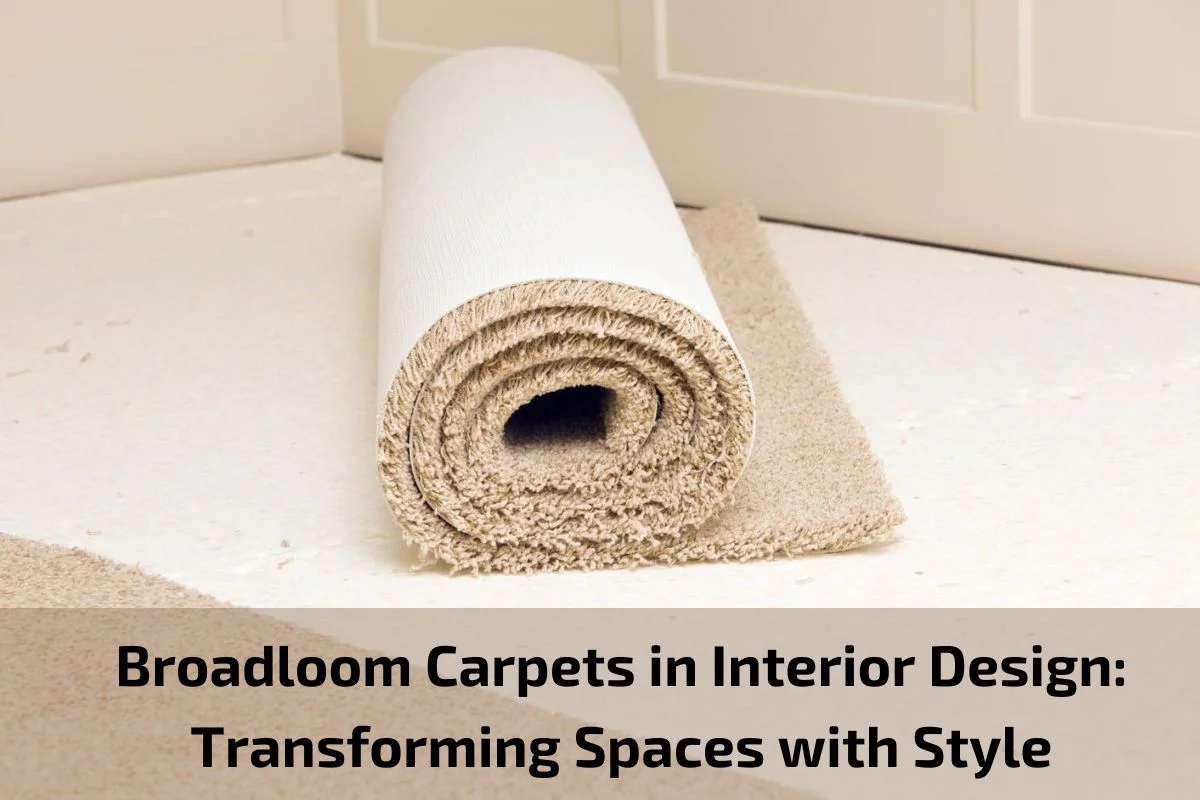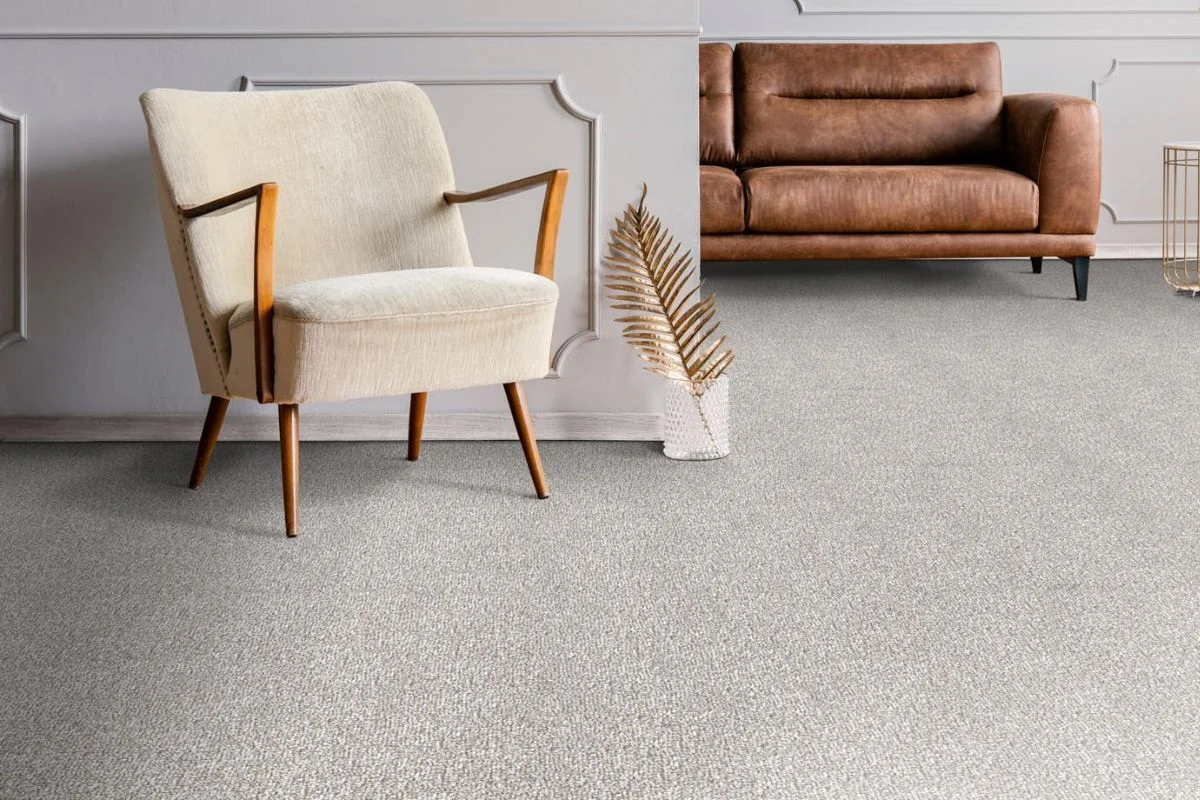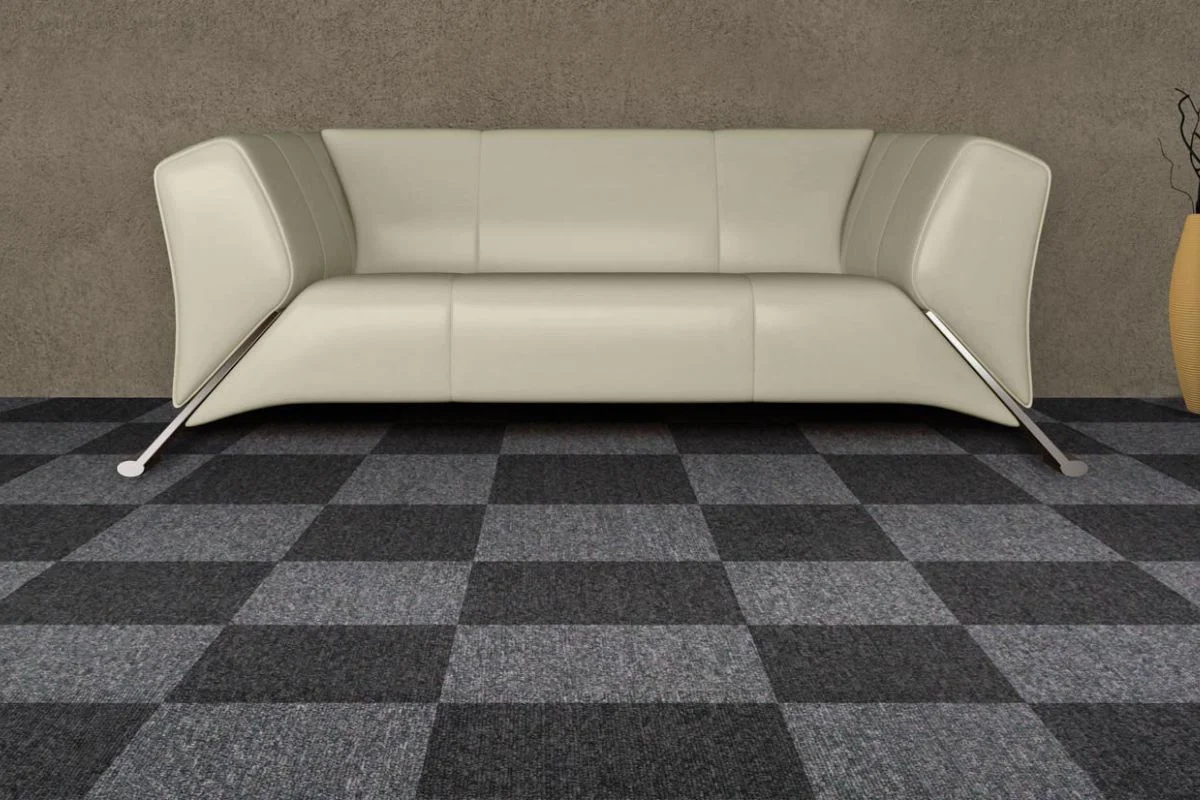Broadloom Carpets in Interior Design: Transforming Spaces with Style
Broadloom carpets stand as a hallmark of versatility and elegance in the realm of interior design. As foundational elements of decor, they possess the remarkable ability to transform spaces with style, imbuing rooms with warmth, texture, and sophistication. From residential dwellings to commercial establishments, broadloom carpets have earned their place as a cherished component of interior design schemes, captivating the senses and elevating the ambiance of any environment.
In this exploration, we delve into the dynamic role of broadloom carpets in interior design, unraveling their transformative power and unrivaled charm. From defining the essence of a room to harmonizing color palettes and enhancing comfort, broadloom carpets serve as more than just floor coverings—they are the very threads that weave together the fabric of a space’s aesthetic appeal.
Definition and Overview of Broadloom Carpets
Broadloom carpets, also known as wall-to-wall carpets, are large, continuous rolls of carpeting typically manufactured in widths ranging from 12 to 15 feet. Unlike carpet tiles or rugs, which come in smaller modular pieces, broadloom carpets cover entire rooms without the need for seams or transitions. They are crafted using various materials such as wool, nylon, polyester, or blends of these fibers, each offering unique characteristics in terms of durability, softness, and stain resistance.
Broadloom carpets serve as versatile flooring solutions, offering comfort, insulation, and aesthetic appeal to residential and commercial spaces alike. They are available in a wide array of colors, patterns, and textures, allowing for endless design possibilities to suit different interior styles and preferences. Whether creating a cozy retreat in a bedroom or adding warmth to a formal dining room, broadloom carpets play a pivotal role in shaping the ambiance and functionality of interior spaces
Importance of Broadloom Carpets in Interior Design
Broadloom carpets hold significant importance in interior design due to their ability to enhance the visual appeal, comfort, and functionality of a space. Here are several reasons why broadloom carpets are valued elements in interior design:
- Unified Aesthetic: Broadloom carpets offer a seamless and cohesive look to a room, creating a unified aesthetic that ties together various design elements such as furniture, wall colors, and accessories. Their continuous coverage provides a foundation for interior design schemes, allowing for a harmonious and balanced space.
- Comfort and Softness: One of the primary benefits of broadloom carpets is their plush and soft texture, which adds warmth and comfort to rooms. They provide a comfortable surface for walking, sitting, and lounging, making them ideal for spaces where people spend extended periods, such as living rooms, bedrooms, and play areas.
- Sound Absorption: Broadloom carpets contribute to sound insulation by absorbing noise and reducing echo in rooms. This is particularly beneficial in homes with open floor plans or high ceilings, where sound can easily travel and reverberate. Carpets help create a quieter and more peaceful environment, enhancing comfort and privacy for occupants.
- Versatility in Design: Broadloom carpets come in a wide range of designs, patterns, and colors, offering versatility and flexibility in interior design. Whether seeking a traditional, modern, or eclectic look, there is a broadloom carpet option to complement any style or theme. Designers can choose from solid colors, intricate patterns, or textured surfaces to achieve their desired aesthetic.
- Durability and Longevity: High-quality broadloom carpets are designed to withstand the rigors of daily use and maintain their appearance over time. They are constructed with durable fibers and backing materials that resist wear, fading, and staining, ensuring long-term performance and value for homeowners.
- Enhanced Safety: Broadloom carpets provide a non-slip surface that reduces the risk of accidents and injuries, especially in homes with young children or elderly individuals. They offer stability and traction underfoot, minimizing the chance of slips and falls on hard flooring surfaces.
Different Types and Styles Available in Broadloom Carpets
Broadloom carpets come in a diverse array of types and styles, each offering unique characteristics and design options to suit various preferences and requirements. Here are some of the most common types and styles available in broadloom carpets:
- Cut Pile: Cut pile carpets feature fibers that are evenly cut to create a dense and soft surface. This style is popular for its luxurious feel and plush appearance, making it suitable for bedrooms, living rooms, and formal areas. Cut pile carpets are available in various pile heights and densities, allowing for customization based on desired comfort and durability.
- Loop Pile: Loop pile carpets consist of loops of yarn that are woven or tufted into the carpet backing. This style offers durability and resilience, making it well-suited for high-traffic areas such as hallways, stairs, and commercial spaces. Loop pile carpets come in different loop heights and patterns, including Berber, sisal, and level loop, offering versatility in design and texture.
- Cut and Loop Pile: Cut and loop pile carpets combine both cut and looped fibers to create unique patterns and textures. This style allows for the creation of intricate designs, geometric patterns, and multi-level surfaces, adding visual interest and dimension to rooms. Cut and loop pile carpets are often used in formal dining rooms, offices, and areas where a touch of sophistication is desired.
- Textured Carpets: Textured carpets feature twisted fibers that create a textured surface with subtle variations in color and tone. This style is known for its casual and informal look, providing a relaxed and comfortable ambiance to rooms. Textured carpets are ideal for family rooms, playrooms, and areas where spills and stains are common, as the textured surface helps conceal imperfections.
- Patterned Carpets: Patterned carpets showcase intricate designs, motifs, and patterns that add visual interest and personality to rooms. From floral prints to geometric shapes and abstract motifs, patterned carpets offer endless possibilities for creating custom looks and statement pieces. Patterned carpets are often used as focal points in formal living rooms, dining rooms, and entryways, adding elegance and sophistication to interiors.
- Solid Color Carpets: Solid color carpets feature a single color throughout the carpet surface, offering a clean and contemporary look to rooms. This style is versatile and adaptable, allowing for easy coordination with existing furniture, décor, and color schemes. Solid color carpets are popular for modern and minimalist interiors, as well as spaces where simplicity and sophistication are desired.
Advantages and Disadvantages of Broadloom Carpets
Broadloom carpets offer numerous advantages and disadvantages, which are important considerations when choosing flooring for residential or commercial spaces. Here’s an overview of the pros and cons of broadloom carpets:
Advantages:
- Seamless Installation: Broadloom carpets come in large rolls, allowing for seamless installation without visible seams or joints. This creates a cohesive and uniform appearance across the entire room.
- Wide Range of Designs: Broadloom carpets offer a diverse selection of designs, patterns, colors, and textures to suit various interior design preferences and aesthetics. From traditional to modern styles, there are options available for every taste.
- Comfort and Insulation: Broadloom carpets provide warmth, softness, and insulation, making them comfortable to walk on and ideal for creating cozy living spaces. They also help to maintain room temperature by retaining heat during colder months.
- Sound Absorption: Broadloom carpets absorb sound waves, reducing noise levels and minimizing echoes within rooms. This makes them particularly suitable for homes, offices, and commercial spaces where noise reduction is important.
- Durability and Longevity: High-quality broadloom carpets are durable and resilient, capable of withstanding heavy foot traffic and everyday wear and tear. With proper maintenance and care, they can maintain their appearance and performance for many years.
Disadvantages:
- Susceptibility to Staining: Broadloom carpets are prone to staining from spills, dirt, and liquids. Certain materials may be more susceptible to staining than others, requiring regular cleaning and maintenance to keep them looking clean and fresh.
- Allergen Accumulation: Carpets can trap dust, pet dander, and allergens, which may exacerbate allergies and respiratory issues for sensitive individuals. Regular vacuuming and professional cleaning are necessary to remove allergens and maintain indoor air quality.
- Difficult to Clean: Cleaning broadloom carpets can be challenging, especially for deep stains and spills. Professional cleaning may be required to effectively remove stubborn stains and odors, which can incur additional costs and inconvenience.
- Potential for Wear and Tear: Over time, broadloom carpets may show signs of wear and tear, including matting, flattening, and color fading. Areas with heavy foot traffic or furniture placement may experience more pronounced wear patterns.
- Installation and Removal Costs: Installing and removing broadloom carpets can be labor-intensive and costly, especially for large areas or complex layouts. Professional installation is recommended to ensure proper fitting and alignment.
Broadloom Carpets in Different Room Settings
Broadloom carpets are versatile flooring options that can be used effectively in various room settings to enhance aesthetics, comfort, and functionality. Here are some common room settings where broadloom carpets are often utilized:
- Living Rooms: Broadloom carpets add warmth and coziness to living rooms, making them inviting spaces for relaxation and socializing. Soft and plush carpeting creates a comfortable environment for lounging, watching TV, and entertaining guests.
- Bedrooms: Bedrooms benefit from the softness and comfort of broadloom carpets, providing a cozy surface for bare feet and creating a tranquil atmosphere conducive to rest and relaxation. Neutral or soothing carpet colors contribute to a calming ambiance ideal for sleeping.
- Dining Rooms: In dining rooms, broadloom carpets can help define the space and absorb sound, making meal times more enjoyable and intimate. Stain-resistant materials and easy-to-clean designs are preferable to withstand spills and food stains.
- Home Offices: Broadloom carpets in home offices contribute to a comfortable and productive work environment, reducing noise levels and providing a soft surface for office chairs. Neutral or patterned carpet designs can add visual interest without overwhelming the space.
- Children’s Playrooms: Soft and cushioned broadloom carpets are ideal for children’s playrooms, offering a safe and comfortable surface for playtime activities. Stain-resistant and easy-to-clean carpets are essential to withstand spills, stains, and frequent cleaning.
- Basements: Broadloom carpets are popular choices for finished basements, providing warmth and insulation against cold concrete floors. Moisture-resistant materials and waterproof backing are recommended to prevent mold and mildew growth in damp basement environments.
- Commercial Spaces: In commercial settings such as offices, retail stores, and hospitality venues, broadloom carpets offer durability, sound absorption, and design versatility. Low-pile or loop pile carpets are preferred for high-traffic areas to withstand heavy foot traffic and maintain appearance.
- Hallways and Corridors: Broadloom carpets are often used in hallways and corridors to reduce noise levels and create a cohesive transition between rooms. Durable and stain-resistant materials are essential to withstand frequent foot traffic and maintain appearance.
Maintenance and Care Tips for Broadloom Carpets
Proper maintenance and care are essential for preserving the beauty, longevity, and performance of broadloom carpets. Here are some maintenance and care tips to help keep your carpets looking fresh and vibrant:
- Regular Vacuuming: Vacuum your broadloom carpets at least once a week to remove surface dirt, dust, and debris. Use a vacuum cleaner with a rotating brush or beater bar to loosen and lift embedded dirt from the carpet fibers effectively.
- Prompt Spot Cleaning: Attend to spills and stains promptly to prevent them from setting into the carpet fibers. Blot spills with a clean, dry cloth or paper towel to absorb excess liquid, then gently blot with a damp cloth and mild detergent to remove the stain. Avoid rubbing or scrubbing, as this can damage the carpet fibers.
- Professional Cleaning: Schedule professional carpet cleaning services annually or as needed to deep clean and refresh your broadloom carpets. Professional cleaners use specialized equipment and cleaning solutions to remove embedded dirt, stains, and allergens, restoring the carpet’s appearance and freshness.
- Use Entrance Mats: Place entrance mats or rugs at entryways and high-traffic areas to trap dirt, moisture, and debris before they can reach your broadloom carpets. This helps minimize soil accumulation and reduces the need for frequent cleaning.
- Rotate Furniture: To prevent uneven wear and indentation marks, periodically rotate heavy furniture and area rugs placed on broadloom carpets. This distributes weight and pressure evenly across the carpet surface, prolonging its lifespan and maintaining appearance.
- Protect Against Sunlight: Minimize exposure to direct sunlight, as prolonged UV exposure can cause fading and discoloration of broadloom carpets. Use blinds, curtains, or UV-resistant window films to block out harmful UV rays and preserve the color and vibrancy of your carpets.
- Use Carpet Protectors: Consider applying carpet protectors or treatments to guard against spills, stains, and soiling. These products create a protective barrier on the carpet fibers, making it easier to clean and maintain the carpet’s appearance over time.
- Regular Inspection: Periodically inspect your broadloom carpets for signs of wear, matting, or damage. Address any areas of concern promptly to prevent further deterioration and maintain the carpet’s overall condition.
conclusion
In conclusion, broadloom carpets offer a blend of comfort, style, and functionality that can transform any space into a welcoming and aesthetically pleasing environment. From their seamless installation to their ability to enhance the ambiance of different room settings, broadloom carpets serve as versatile flooring solutions for both residential and commercial spaces.





0 comments